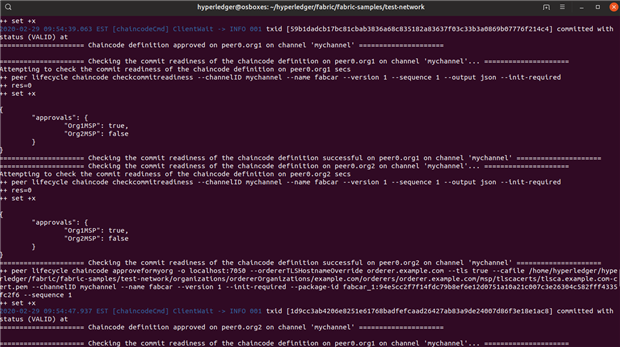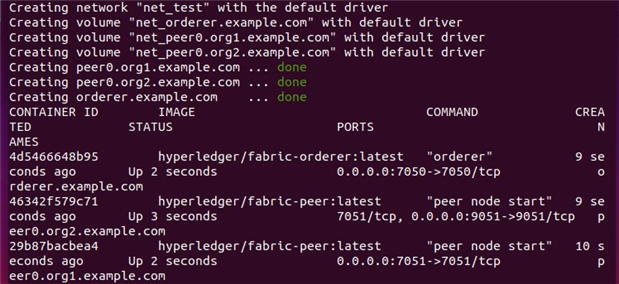This post is part of the Infineon Blockchain Starter Kit road test.
Blockchain - outside of the bitcoin context - is new to me.
Follow along with me on this path to learn the technology....
|
I try to show the technology, without explaining it. It took me a while to get here - set up all software, services and dependencies to make it work. Future blogs will dig into that But this time, I want to show some achievements. If you're looking for the next bitcoin solution, you may want to look elsewhere - this is related because chains define trust, yet not related. |
Blockchain has many uses. Here, I'm looking into its capability to support the trust-and traceable part in distributed transaction records.
When doing transactions between parties (an order, a sale, money transfer, a movement of goods, turning ingredients) we're looking for binding bounds.
|
A handclap between farmers in a Flanders and Netherlands animal markets , something that is way older than any blockchain trust, is my guidance.
When you break that human-to-human, physically-touching-hand-to hand clapped-and-gripped agreement (still used these days - there's 80 years between both videos) you'd lose all integrity - the genetic equivalent of revoking your CA certificate in modern times.
Over here, clapping hands and closing a deal on a market that way is stronger than written jurisdiction. This is very binding. A person to person deal closed physically. It may look like folklore but any court will try to stay away from deals that are clapped and shaken. You can see the polite English version (only the firm handshake is evident - although some reluctant hand-holding in between that mimics the clapping can be spotted sometimes) in the Antiques Road Show.
Clapping the hands - up on to the millisecond before closing the deal - is equal to defining a contract in Hyperledger , shaking hands is equal to closing a deal, a transaction in Hyperledger). You can walk away from the clapping (negociation). You can't undo the handshake (sign). I would never clap and shake a deal with someone today if I was not sure to close it, because I'd lose all trust when I'd break a clapped deal. For ever. That's why public markets, where everyone can participate and witness, are crucial. Similar to having audit access to your blockchain ledger ...
A certificate is a token of trust that can be revoked when you aren't living up to the trust of the people you're doing business with. |
HyperLedger Fabric
Fabric (oversimplified) is a set of records (ledger) where you can create and query transactions. Your trusted partners can do the same.
At any time, you and your partners can verify and consult those transactions.
The set of records can be distributed and synchronised.
If a non-trusted party wants to put bogus transactions on that ledger, or a any party wants to meddle with an existing transaction, anyone can see that.
Fabric is a set of services that runs these ledgers and the communication between trusted/synched ones.
Example Fabric Project
The example project that comes with Fabric runs two synchronised and trusted ledgers, as separate services.
Organisations can post transactions on any of the two instances.The ledgers will sync.
At startup, the example will post a number of new automobile production transactions.
The postings are signed by the organisation that does the transactions. The transactions can be queried - and verified against the chain - by any party.
The default example, after posting those automobile orders on the ledger., assigns a purchase of one of those cars to one of the players.
Both players (and an other agreed party) can then consult the transactions and their integrity:
Here's the startup of the services:
Query by org1, on ledger instance running on port 7051:
The same query, performed by org2, on a different but chained ledger, running on 9051:
At this time, I expect that the confusion is still high - although trying and running it helps.
Future posts will bring clarity...
| Related Blog |
|---|
| Blockchain - HyperLedger Fabric pt 1: post and search transactions on a distributed trusted ledger |
| Blockchain - Hyperledger Burrow: set up a distributed ledger |
| Blockchain - Get Some Crypto Currency on an Infineon Security 2Go Card |
| Blockchain - Debug the Infineon Demo App with Android Studio and Your Phone |
| Blockchain - Analyse the Infineon Android Demo App - part a: Detect Card |
| Blockchain - Analyse the Infineon Android Demo App - part b: Retrieve Ethereum Crypto Currency Balance |
| Blockchain - Analyse the Infineon Android Demo App - part c: Transaction, Move Crypto Currency to Another Account |
| Blockchain - Talk Directly to the Infineon 2Go Smart Cards API |
| Blockchain - Smart Contract Test |
| Road Test notepad: Infineon Blockchain Starter Kit |
| Infineon Blockchain Starter Kit - Review |
| Blockchain - HyperLedger Fabric pt 2: application using blockchain and smart contract |
| Blockchain - HyperLedger Fabric pt 3: web console |





Top Comments
-

Jan Cumps
-
Cancel
-
Vote Up
+1
Vote Down
-
-
Sign in to reply
-
More
-
Cancel
Comment-

Jan Cumps
-
Cancel
-
Vote Up
+1
Vote Down
-
-
Sign in to reply
-
More
-
Cancel
Children